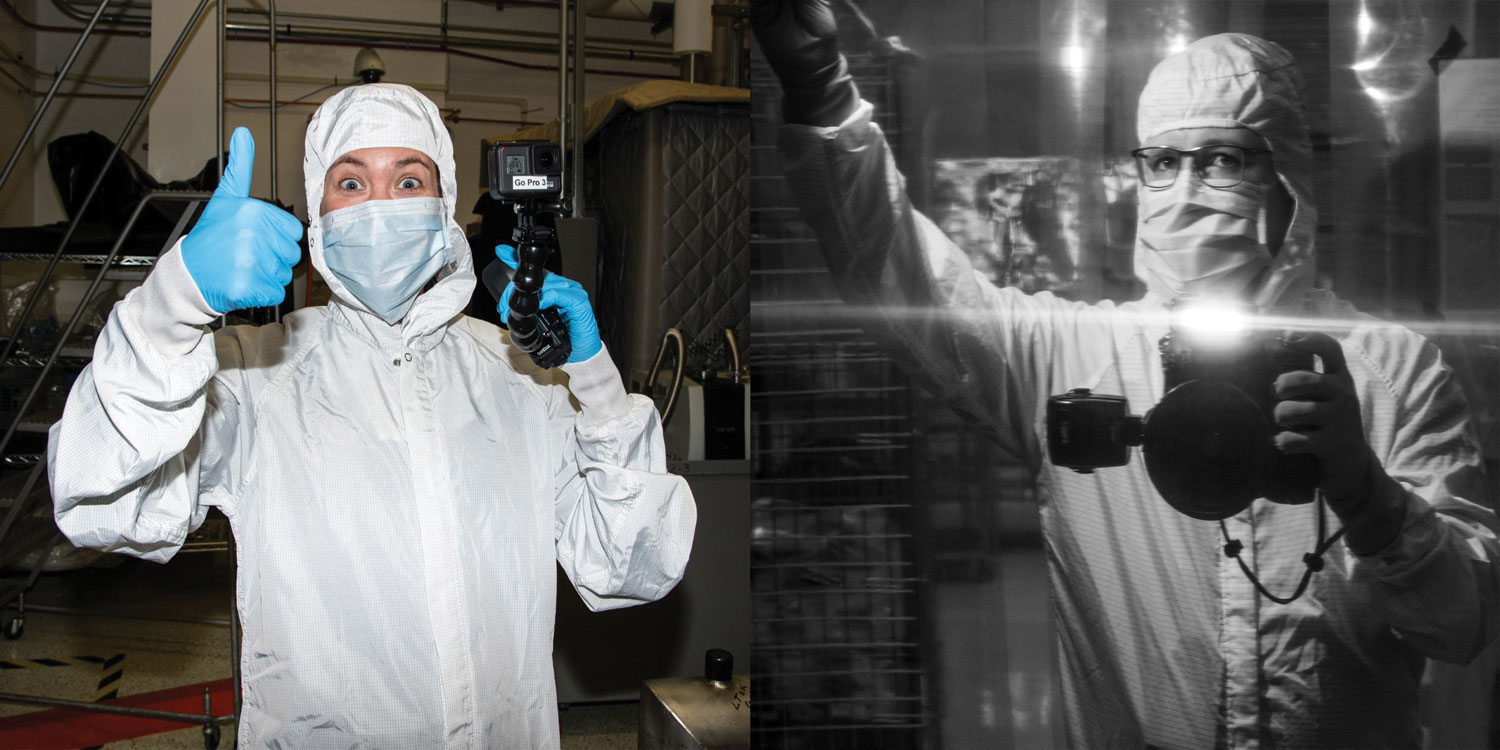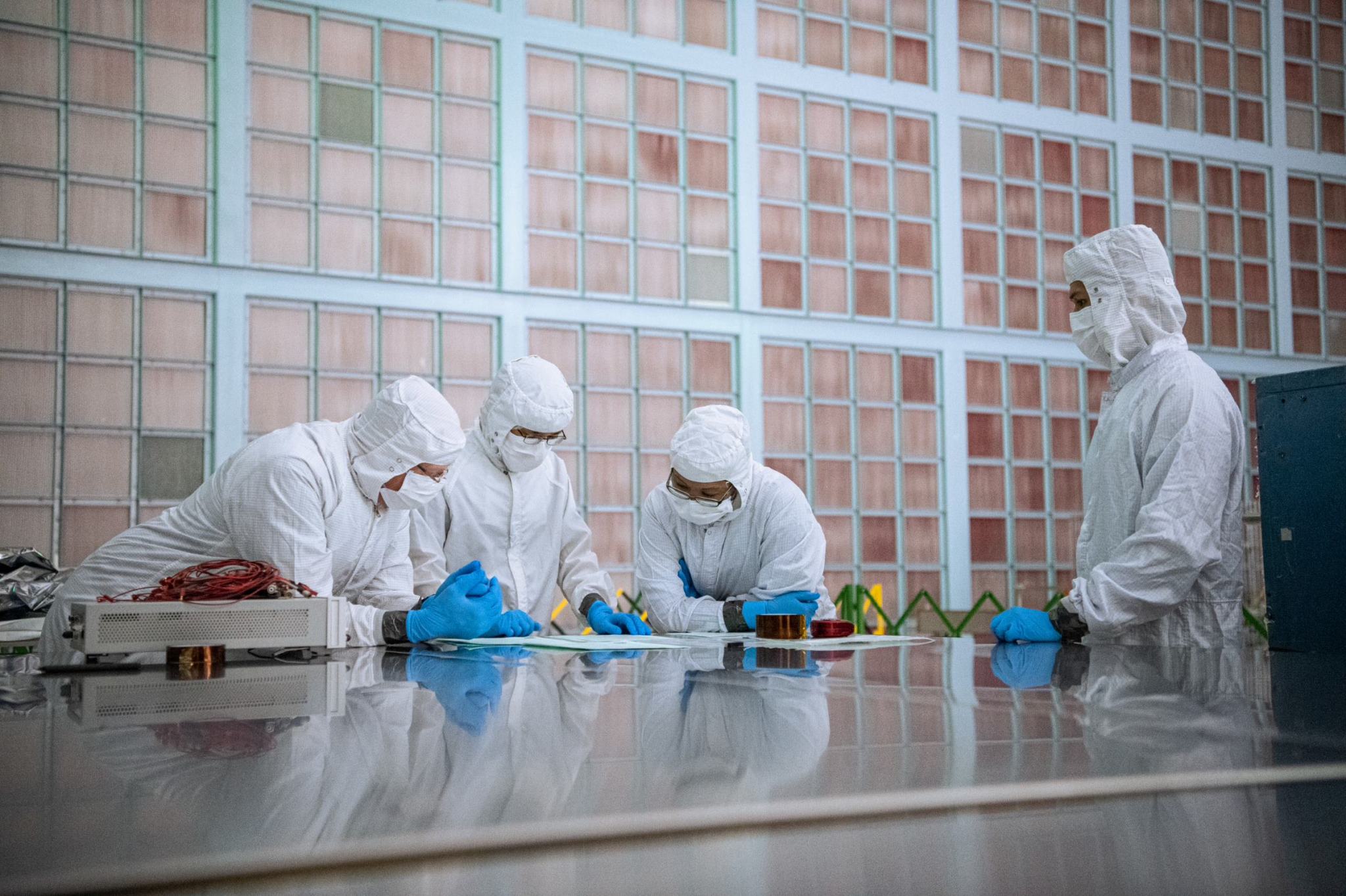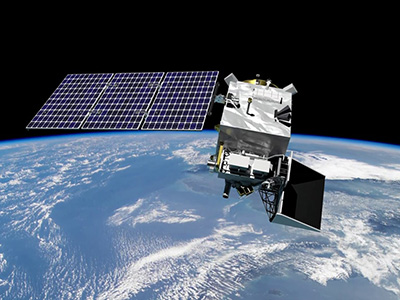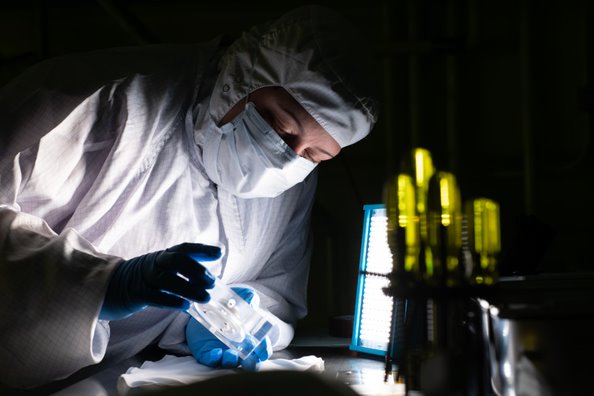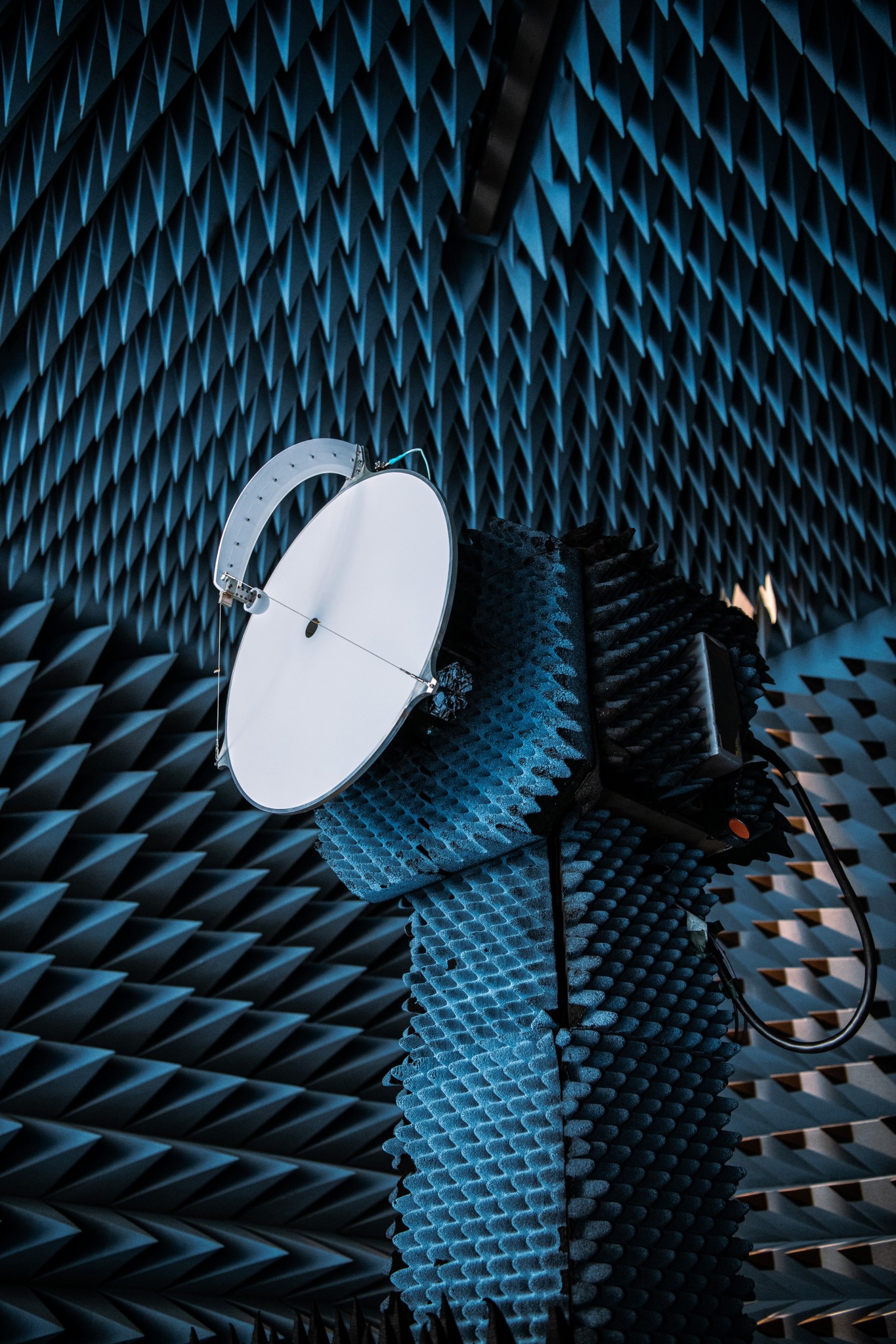Ambiguity.
That’s the word that comes to mind when documentary photographers start each day at NASA’s Goddard Space Flight Center in Greenbelt, Maryland.
“You walk in and think one thing is happening,” said OCI’s lead documentary photographer Desiree Stover. “But in an instant things change – maybe goes wrong –- and you need to be ready to capture it.”
From build to testing to launch, one figure is always present in the background capturing the story of each Goddard mission – the documentary photographer.
In honor of #WorldPhotoDay, follow along as two of our documentarians share what it’s like to capture the story of Goddard’s latest mission build PACE.
PACE or Plankton, Aerosol, Cloud, ocean Ecosystem, is set to launch in early 2024. Its goal is to see ocean and atmosphere features in unparalleled detail. By measuring the intensity of the color that reflects from Earth’s ocean surface, PACE will capture fine details about tiny plant-like organisms and algae that live in the ocean, called phytoplankton, that are the basis of the marine food web and generate half of Earth’s oxygen.
Crafting the Story
For Stover and her partner Denny Henry, PACE’s lead mission photographer, the story starts with the smallest details.
“I think one of the first things I photographed was the outside of a circuit port box. It was literally an empty metal box,” said Henry, who started photographing PACE in 2020, right before the pandemic. “It might be small, but it’s part of a system that’s going to do big things.”
A typical day for these photographers usually starts with a morning meeting, assignments and getting ready. By the end of the day, the original plan has likely been changed, multiple times.
“Some days we might shoot eight photos, other days it might be hundreds or more,” Stover said.
Images captured during shoots are used for a variety of things, especially technical components of the mission. This includes documenting builds, spotting mistakes and testing.
Stover got her start at Goddard by photographing NASA’s James Webb Space Telescope before switching to capturing imagery of Goddard’s small instruments, including PACE’s Ocean Color Instrument, or OCI. This advanced sensor will enable continuous measurement of light throughout the ultraviolet to shortwave infrared spectrum to better understand Earth’s ocean and atmosphere.
She says she’s still in awe that her teammates trust her “eye.”
“One of the most fascinating things about working here is that we have a specific job,” she said. “And even though engineers can pick up a camera and take photos, they don’t. They know we’re the experts at it. They trust our eyes to tell and capture the story.”
Henry said one of the most memorable days he’s documented so far was watching the PACE team integrate the SPEXone instrument into the spacecraft.
“All the partners were there as I photographed. It was a big deal,” he said. “I captured every bolt all the way to the mounting. It’s important to get these details. Six months from now someone who wasn’t there might want to see what was done in what order.”
Henry said that capturing images is only part of the job. For every hour of shooting, there’s also an hour spent processing and working with partners to ensure things were documented correctly.
Playing Detective
While telling the story is important, Stover says that part of the job is speaking up, especially when you notice something wrong.
During one assignment documenting vibration testing, Stover noticed that OCI’s Earth shade looked different.
“We took the bagging off and could see tape peeling off the radiator panels, possibly loose wires in certain places,” she said. “When I saw this, I thought back to what it was like when we shot this the first time.”
It’s common for the photographers to shoot things twice to examine how things might change when in testing. When Stover saw the tape, she got to work ensuring her hunch was right.
She sent a series of images to the thermal team lead letting him know what she found. Plans were already underway to change the design.
The unexpected
Stover and Henry agree that documenting missions has come with some interesting experiences.
Both had to undergo fall protection harness training in the event they had to climb around one of Goddard’s cleanrooms, something that happened to Stover during one assignment.
“Once I was up in Building 29’s high bay. Like up at the very top in the crane rafters shooting. I never thought I was afraid of heights until that moment,” she said. “But I focused on the image and what task I was accomplishing and completed the assignment without issue.”
Henry said adjusting to Covid-19 required a lot of flexibility, especially with sudden changes.
“This is not a job you can do from home,” he said. “After a few months, we adapted.”
Henry said that many times mission teams will find that engineering drawings won’t match up with what was actually built. With the pandemic restrictions, PACE heavily relied on his images to note how things changed and why issues occurred.
As PACE heads toward big milestones in the next year, both Stover and Henry are excited to see their work come together, including the day of launch.
They both agreed that photographing the teams involved in each aspect of PACE’s build is especially rewarding as they help create mementos that go along with their mission’s story.
By: Sara Blumberg
NASA’s Goddard Space Flight Center, Greenbelt, Md.



























